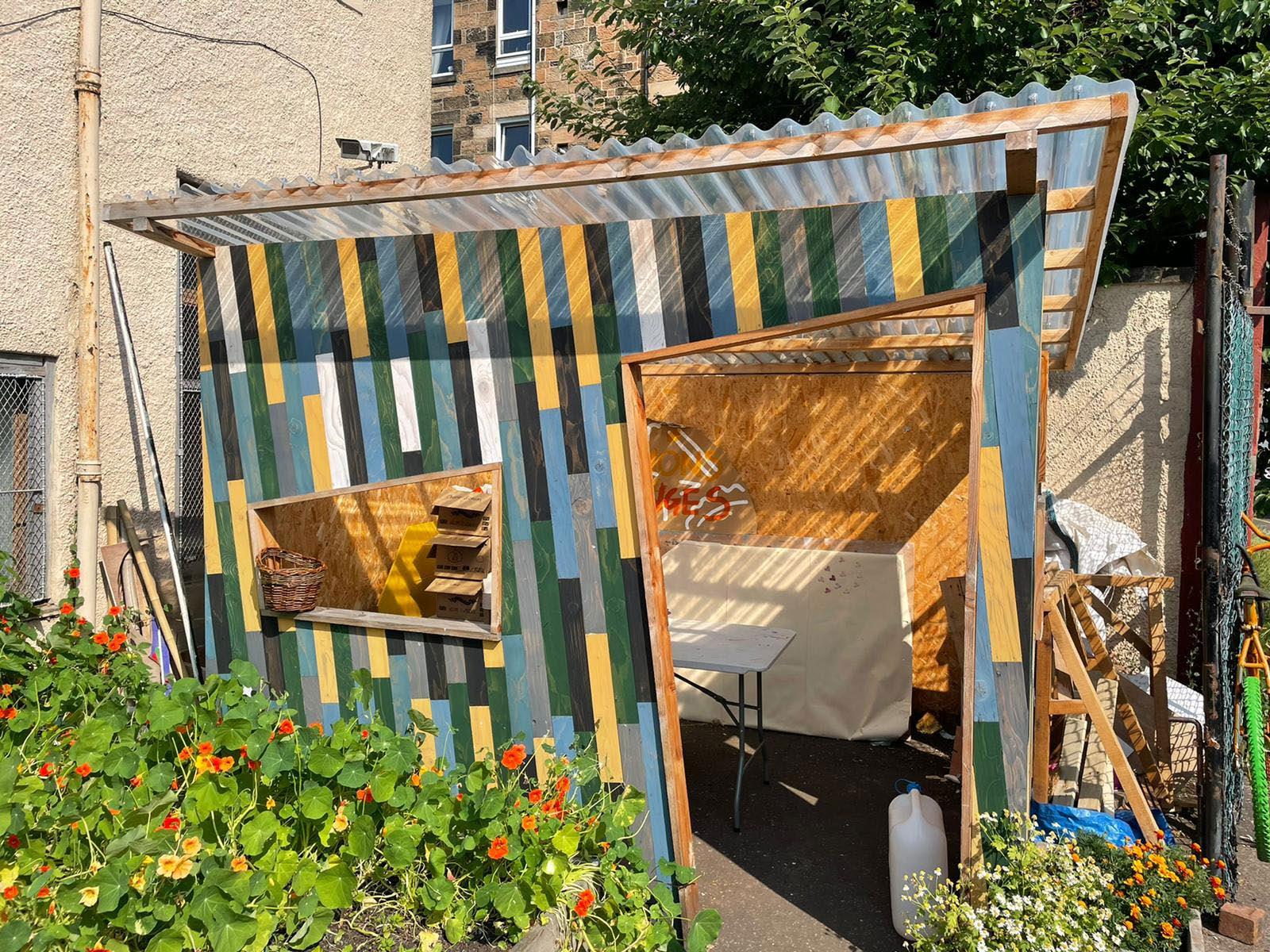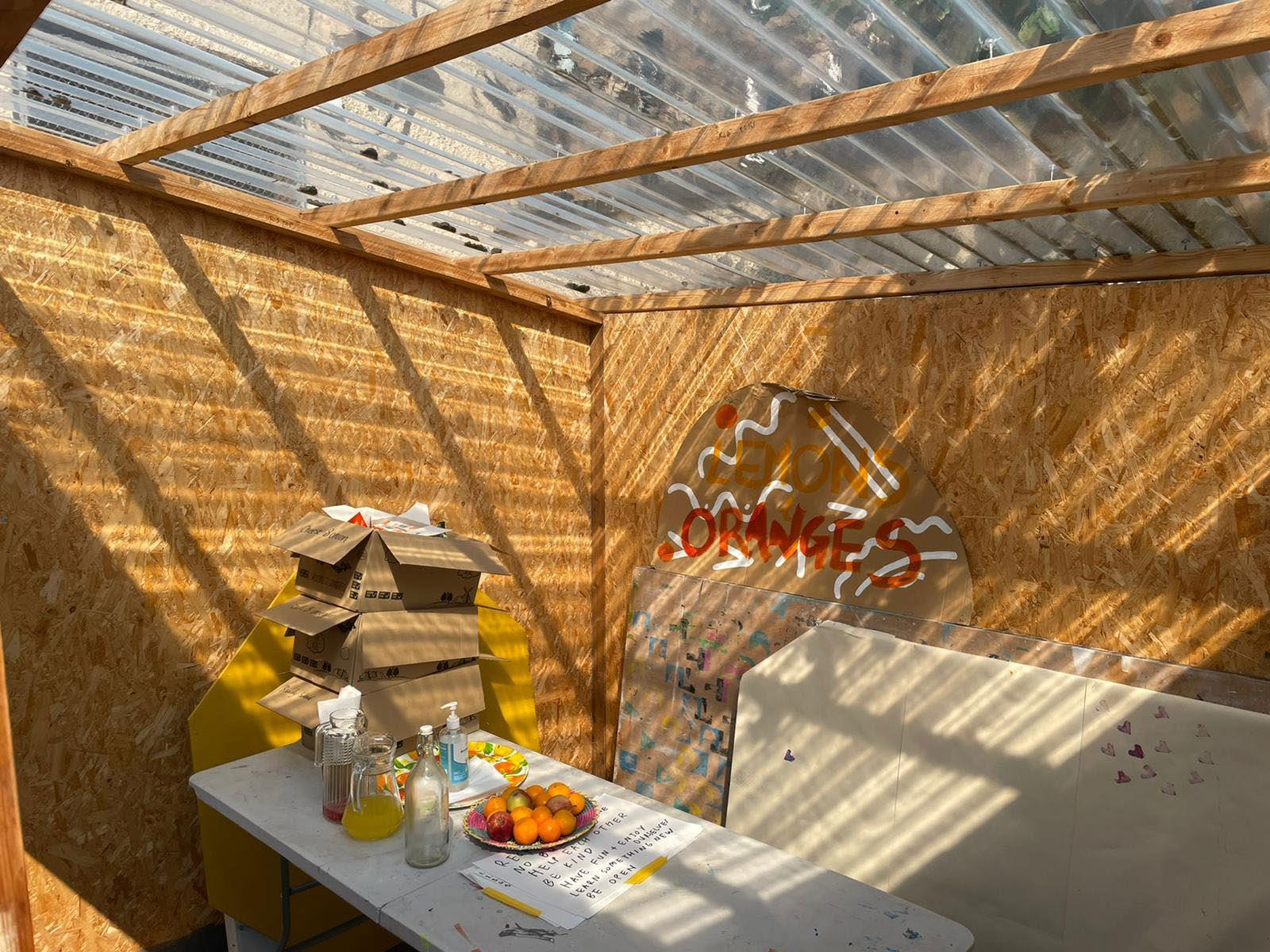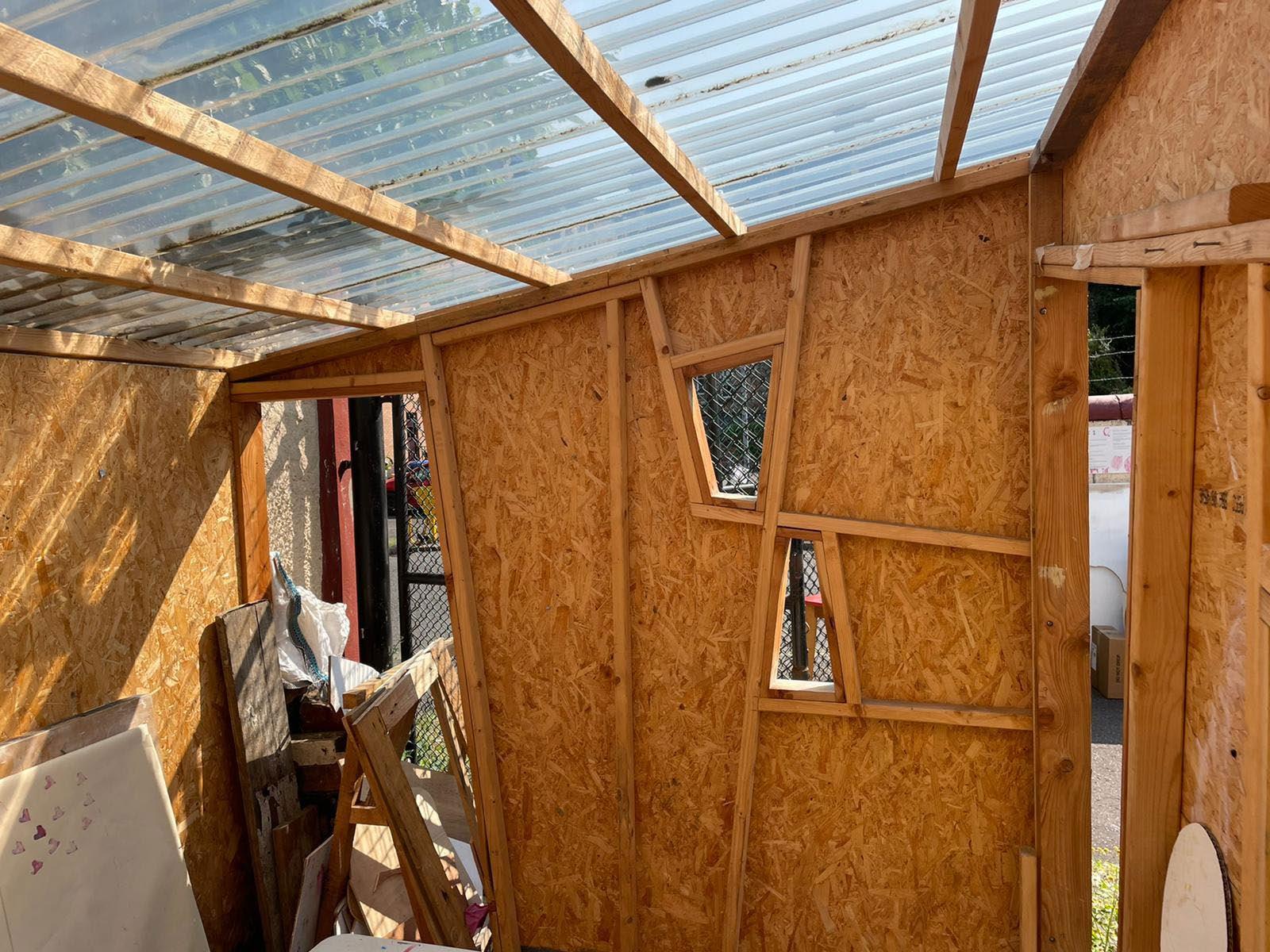Workshop 4: Being Sad
‘The Beings’ was a series of online workshops led by writer Rosemarie Geary and artist Lucy Grainge over June/July 2021 as part of an online residency with Rumpus Room.

Rosemarie Geary gearyro@tcd.ie
Lucy Grainge lucy.grainge@outlook.com
Section 1: Where are we now?
I.5 degrees of warming above pre-industrial levels is seen as the upper limit of warming that we can manage as a society, “Global average temperatures of 1.5 degrees above 19th-century levels are seen as a threshold beyond which the most dangerous impacts of climate change will be felt… Scientists warn that temperature rises above 1.5 degrees will lead to more heatwaves, extreme rainstorms, water shortages and drought, greater economic losses, lower crop yields, higher sea levels and destruction of coral reefs.”
Limiting warming to 1.5 degrees is what our governments promised us in the Paris Agreement, however;
“In the coming five years, the annual mean global temperature is predicted to be at least 1 degree warmer – with a range of 0.9-1.8 –than pre-industrial levels.” 1 According to NASA; “In many regions, warming has already surpassed 1.5 degrees Celsius above preindustrial levels. More than one-fifth of all humans live in regions that have already seen warming greater than 1.5 degrees Celsius in at least one season.” 2
1. Source: World may hit 1.5 degrees temperature threshold in next five years, WMO warns
2. Source: A Degree of Concern: Why Global Temperatures Matter –
Climate Change: Vital Signs of the Planet
3. Source: IPCC: Summary for Policymakers
4. Source: UN Says Climate Genocide Is Coming. It’s Actually Worse Than That.
The climate and ecological crisis affects all of us, but not equally:
“Populations at disproportionately higher risk of adverse consequences with global warming of 1.5°C and beyond include disadvantaged and vulnerable populations, some indigenous peoples, and local communities dependent on agricultural or coastal livelihoods (high confidence)... Poverty and disadvantage are expected to increase in some populations as global warming increases; limiting global warming to 1.5°C, compared with 2°C, could reduce the number of people both exposed to climate-related risks and susceptible to poverty by up to several hundred million by 2050 (medium confidence)”.3
Representatives from the Marshall Islands, which are at extreme risk of disappearing under rising sea levels, have called 2 degrees of warming an act of genocide. 4
“Keeping to the 1.5 degrees limit means dramatic efforts to cut carbon emissions by nearly half by 2030 and to net zero – or carbon neutrality – by 2050… But current action promised by countries puts the world on track for 2-3 degrees of warming by the end of the century.” (Irish Times)

‘Growing Through Grief’ By Charlotte Simmons, which was in Adapt + Act issue 1.
https://issuu.com/rumpusroomteam/docs/ adapt_act_issue_1_climate_action

Ours is a time of loss, grief and fear. At some point being sad is unavoidable. And although we can live in denial, or avoid experiencing difficult emotions, if we do we’re missing the vital thing that grief is telling us:
“As we grieve, we appropriate new understandings of the world and ourselves within it. We also become different in the light of the loss as we assume a new orientation to the world. As we relearn, we adjust emotional and other psychological responses and postures. We transform habits, motivations and behaviours… some of what we took for granted in ourselves or in our life patterns is no longer viable or sustainable. Relearning the world thus requires that we make changes (Van Dooren, T. qtd, Attig, T. 139, 2014).

Sadness and grief tell us that “we must relearn how to live in a shared world” (144, 2014). And this can be a joyful process. Counteracting many of the effects of climate change means reducing and eradicating global poverty, and the unfair systems that perpetuate it. It means having strong, resilient communities and learning skills that bring us back into the world. It means rediscovering how to relate to each other, shedding so much of what has been harmful and alienating, and as daunting as this is, it is also cause for celebration.
“The thing about a crisis this big, this all encompassing, is that it changes everything, it changes what we can do, what we can hope for, what we can demand of ourselves and our leaders… climate change changes everything” - Naomi Klein, This changes Everything
So although it can be tempting to not engage, even though disengaging is the easiest, the most encouraged and accessible route available to us in our current society, if we want anything to change we have to look, to think, to act; we have to be capable of facing our times.
Photos from Industrial Scars© 2016, by environmental artist by J Henry FairKnowing more might mean feeling sad, but as Thom Van Dooren writes; “Knowing more matters, not least because it can and does enable us to see differently, and so be drawn into new kinds of relationships, new kinds of ethical obligations” (Van Dooren, T. 83, 2014).
Of course having the emotional capacity for this can be a privilege, for various reasons including the experience of poverty or racism or both, some of us have greater emotional capacity to engage than others.
Suppressing fear, anger and sadness or using these feelings as weapons against those who are more vulnerable will only add to the next cycle of violence and trauma. We need a form of “grieving that seeks to promote new [bio]social constellations so that the replaying of trauma effects and injurious histories [and presents] might be shorn of their deadly consequences.” (qtd, Clamwell,T. 143, 2014).
“This is the kind of mourning that asks us - perhaps demands of us, individually and collectively - to face up to the dead and our role in the coming into being of a world of escalating suffering, loss, and extinction” (143, 2014).
What is the artist’s role in collective grieving? Once again, how can we make present what is absent, what is hidden from view?
 Photos from Industrial Scars© 2016, by environmental artist by J Henry Fair
Photos from Industrial Scars© 2016, by environmental artist by J Henry Fair
An Essay by Patternity for Viewpoint Magazine

https://www.patternity.org/explore/index/essay-pattern-conscious ness/?parent=a94b830c-010f-475c-b9a5-590387d7af36&pointer=6

On mourning through story and narrative, Thom Van Dooren writes;
“As they travel, stories breathe new life into the dead, keeping them moving and enabling them to haunt our lives and future possibilities. In this sense, storied mourning does not attempt to recover and move on from a loss - to put the dead to rest - but, as Jacques Derrida has suggested, offers us the possibility… [of asking how] ‘we might live with ghosts’” (142, 2014).
Personally speaking, my own writing practice has made me capable of sitting with the sadness of this time. It brings me into the world and helps me navigate it. Writing about climate change makes me want to know as much as I can, it makes me want to salvage something beautiful. If you aren’t noticing the painful things, you’re probably not noticing what is good either. Maybe the desire to resist comes from the same urge to find something beautiful in this time.
I recently heard Naomi Klein speak about an encounter she had with a woman who was a member of SEED; a young adult, aboriginal led climate action group. The woman named Marwa, told Klein that it’s her privilege to be alive right now, that the decisions she makes, that all of us make, will shape the lives of generations to come. We have a sacred obligation to act, to be good ancestors. 5
‘In choosing to grieve actively, we chose life’ (Attig,T qtd 144, 2014).
https://open.spotify.com/playlist/5VWpacVe6OfeEezqWjHEqk?si=5119af928fae49a3 Hold Your Own - Kae Tempest 5 Source: https://shakespeareandcompany.com/podcast?playlist=310
“I have become acutely aware that extinction is never a sharp singular event - something that begins, rapidly takes place, and then is over and done with. Rather the edge of extinction is more often a “dull” one: a slow unravelling of intimately entangled ways of life that begins long before the death of the last individual and continues to ripple forward long afterward, drawing in living beings in a range of different ways” (Van Dooren, T. 2014, 12).
In Being Lost we explored some of the ways we’re being disentangled from each other. Of how we’re losing the intimacy of sharing the earth with cultures and species who, for hundreds of generations, have shaped and molded the world. We’re losing the traces of all the ghosts that let us live.
This is the whirlpool of extinction, which is not death, but erasure; the world becoming dull. I want to close with the words of Deborah Bird Rose, who tells us how we might make it shimmer.
“Shimmer… is a process of encounter and transformation... it is my hope that an encounter with shimmer may help us better to notice and care for those around us who are in peril. Here, at the edge of extinction, is the place to begin, when the world that one loves… is being trashed” (Rose, D. B. 51-2, 2017).
Further watching Deborah Bird Rose, “Shimmer: When All You Love is Being Trashed,” https://vimeo.com/97758080
https://batsrule-helpsavewildlife.blogspot. com/2018/12/deborah-bird-rose.html

“In his classic essay titled ‘From Dull to Brilliant’, anthropologist Howard Morphy discusses art in the Arnhem Land region of North Australia. His focus is on the Yolngu term bir’yun, which translates as brilliant or shimmering. This is an aesthetic that is found in many parts of Australia and is not limited to art. It pervades ritual, dance and many aspects of life more widely… As Morphy describes brilliance (or shimmer - both terms are good) the process of Yolgnu painting starts off with a rough blocking out of shapes and then shifts to fine-grain crosshatching. When a painting has just its rough shape, the artist describes it as “dull”. The crosshatching shifts the painting to “brilliant”, and it is the brilliance of finely detailed work that captures the eye. Bir’yun is the shimmer, the brilliance, and, the artists say, it is a kind of motion. Brilliance actually grabs you. Brilliance allows you, or brings you, into the experience of being part of a vibrant and vibrating world. When a painting reaches brilliance, for example, people say that it captures the eye in much the same way that the eye is captured by sun glinting on water… It is equally a lure: creatures long to be grabbed, to experience that beauty, that surprise, that ephemeral moment of capture.
https://news.aboriginalartdirectory.com/2011/08/young-yolngu-wins-in-wa.php

“Bir’yun, or shimmer, or brilliance, is - people say - one’s actual capacity to see and experience ancestral power. That is to say that when one is captured by shimmer, one experiences not only the joy of the visual capture but also… ancestral power as it moves actively across the world.
From Dull to Brilliant can be read as an account of ecology: the earth shimmers…Within the domain of art, a pulse is performed by bringing the painting from dull to brilliant. Then, at the end of a ritual, the brilliant paintings are rubbed out, they are made dull again… [reflecting] the pulse between wet and dry seasons.” (G 54-5, 2017).
“In this world of connectivity, we live to celebrate another day and to experience life’s shimmer as it comes forth in our lives with all manner of tears, happiness, grief, commitment, love, exuberance and celebration. Of course, we humans are part of it. The waves of ancestral power that shimmer and grab are also exactly the relationships that bring us forth and sustain us. The kiss of life is an ancestral blessing, alive, brilliant, and pulsating in the world around us and within us.
At the same time, we may also think about what is refused when we turn away from all this abundance. Instead of the kiss of life, we humans too frequently offer a resounding no, and every no also ripples and reverberates across animals and trees, through photosynthesis and oxygen, even into breath and into the heartbeat and rhythms of life itself. No invades the shimmer of life, unmaking the ancestral power. In this time of extinctions, we are going to be asked again and again to take a stand for life, and this means taking a stand for faith in life’s meaningfulness. We are called to live within faith that there are patterns beyond our known patterns and that in the midst of all that we do not know, we also gain knowledge. We are called to acknowledge that in the midst of all that we cannot choose, we also make choices. And we are called into recognition: of the shimmer of life’s pulses and the great patterns within which the power of life expresses itself. We are therefore called into gratitude for the fact that in the midst of terrible destruction, life finds ways to flourish, and that the shimmer of life does indeed include us” (Rose, D. B. 2017, 61).
https://www.theguardian.com/travel/2020/oct/09/ the-environment-comes-alive-visiting-the-northern-terri tory-during-the-wet-season

https://www.researchgate.net/figure/A-Yolngu-view-of-the-Milky-Way-a-tradi tional-bark-painting-by-Yarawu-The-crocodile_fig9_305119337

https://open.spotify.com/playlist/5VWpacVe6OfeEezqWjHEqk?si=5119af928fae49a3
Death Bed - Liminal Remix
Steam of consciousness Choose 4 words







